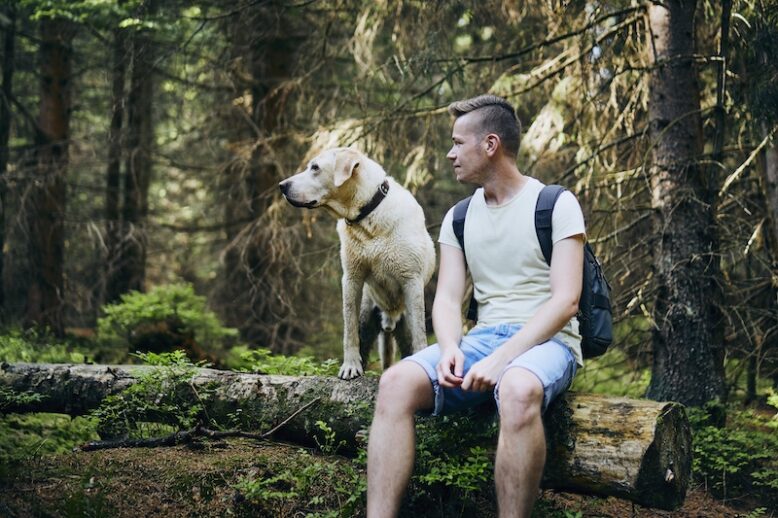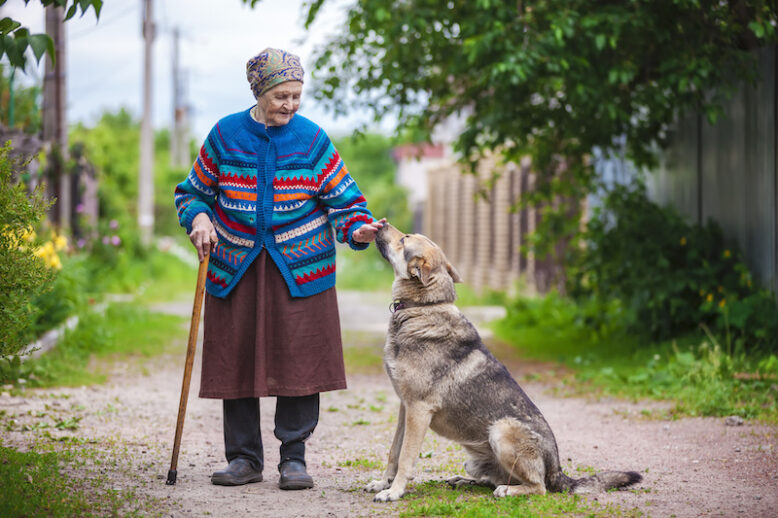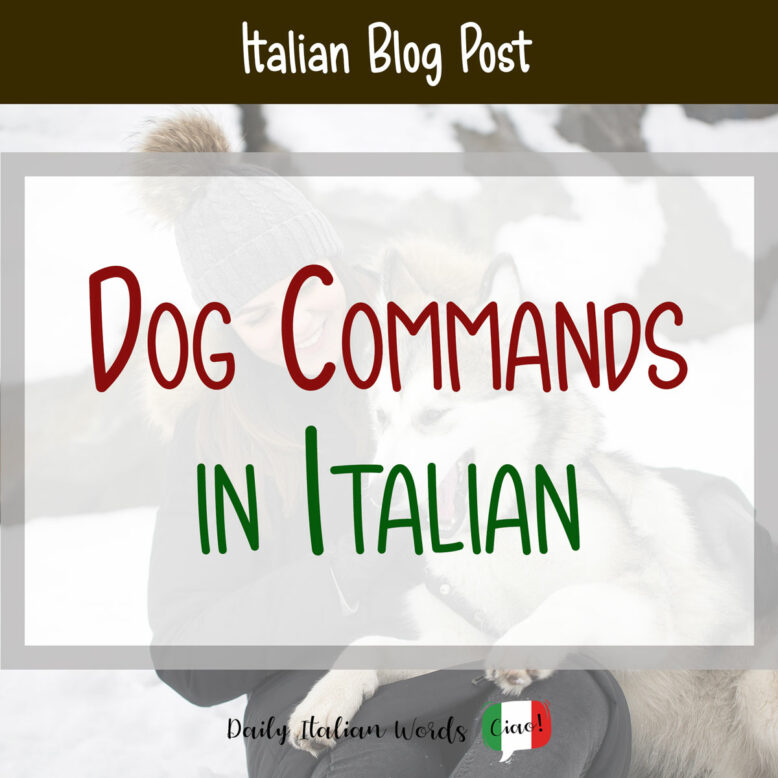Ready to add a dash of Italian flair to your dog training sessions? Picture this: You’re strolling down the street and with a chic Siediti (Sit), your puppy performs perfectly. The cute thing is that you’re not only teaching your furry friend good manners; you’re also embarking on a learning experience where you two explore the nuances of a new language together.
Teaching your dog commands in Italian is pretty much the same as in English – repeat the instructions, gently guide your dog into the desired action, reward their efforts… and be patient! If your dog is already familiar with English commands, it’s best to introduce each command in both languages for easier learning.
So, grab some tasty treats and start practicing these commonly used dog commands in Italian with your furry friend, from the basics like ‘sit‘, ‘stay‘, and ‘come‘, to more advanced commands like ‘heel.’ And don’t forget to praise them with “Bravo!” or “Brava!” (Good boy! / Good girl!) for their achievements!

Basic dog commands in Italian
Seduto/a (Sit)
This is usually one of the first tricks people teach their dogs because it’s simple and super useful. If you’ve got guests coming over, just saying ‘seduto‘ to your dog can keep them from jumping up to greet them. It’s also a lifesaver for keeping your pup safe, especially from dashing into the road.

Fermo/a (Stay)
‘Fermo’ is the next step after “Seduto” for training dogs. It’s all about teaching them to stay put and chill, even when we’re not right next to them. This command is super helpful for keeping things under control in different scenarios, ensuring the dog stays calm and maintains control in public places!
Giù (Down)
The ‘Giù’ command is similar to the “Seduto” instruction but goes a step further by directing your dog to lie fully on the ground. It’s particularly useful for managing undesirable behaviours in dogs, especially when they’re acting out because they’re scared or anxious, calming them down and helping them feel more in control.

Vieni (Come)
The Italian dog command ‘Vieni’ clearly directs the dog to approach you. This instruction is vital for recalling the dog after they’ve been outside or in a situation that could be risky, making it a crucial aspect of the training.
Andiamo (Let’s Go)
‘Andiamo’ is another essential Italian dog command that’s used to tell your dog it’s time to move from one place to another. Learning to recognise this Italian command ensures that your canine friend is well-equipped to follow your lead in different situations, making your walks more fun and relaxed.

Lascia (Let Go)
‘Lascia’ is a key command to get dogs to stop doing something right away. It’s super helpful in keeping your stuff safe from playful or nosy pets, but also for preventing them from picking up something that could be bad for them. ‘Lascia‘ is also crucial when your dog is around other animals, as it helps prevent fights or rough behaviour.
Other useful dog commands in Italian
Here are some more dog commands in Italian to turn your furry friend into a perfectly trained superstar.
Piede (Heel)
If your dog loves to pull on the leash and wants to check out everything, try teaching them the Italian command ‘Piede’ to help them learn to walk nicely beside you, matching your pace. Using ‘Piede‘ can really relax your walks, as your dog will focus more on following your lead.

Non Tirare (No Pulling)
Like ‘Piede,’ ‘Non tirare’ is another important command to make walking with your pet more enjoyable. This command is all about teaching your dog not to pull on the leash, which is a common issue for many dog owners. Dogs are usually curious and like to explore quickly, so walking calmly on a leash isn’t something that comes naturally to them. But with consistent training, you can teach even the most energetic dog to walk nicely by your side.
Porta (Fetch)
The “Porta” command is perfect for energetic canines and playful owners. It’s about teaching your dog to go fetch a toy you throw and bring it back to you. To be honest, not all dogs are super excited about chasing after toys, but that’s precisely why “Porta” can be a fantastic way to have some enjoyable playtime and bonding with your pup.

Silenzio (Quiet)
Ever had people give you annoyed looks while you’re walking your dog because it won’t stop howling? Well, the Italian dog command ‘Silenzio‘ might come in handy to help tone down all that loud barking. It won’t make your dog completely silent – dogs do like to bark, after all – but it can definitely help reduce the noise and make things more peaceful at home and in your neighbourhood.
Zampa (Paw)
To wrap up this list, here’s a fun dog command you can teach your buddy: ‘Zampa.’ This simple trick isn’t just adorable, but it also helps you two get closer. Plus, it comes in handy when you want to check and clean your dog’s paws. Along the same lines, you can also teach your dog ‘Dammi il cinque,’ which means ‘high five‘ – another fun way to interact with your furry friend.

That’s it! Enjoy training your cane (dog) and the new words!


Valentina Nicastro is a travel writer in love with her home country, Italy. Having travelled widely around the globe, she realised there was more to explore closer to home and decided to put the passport aside for a while. When she is not immersed in documenting Italy, you’ll find her donning her communication consultant hat, weaving words as a content writer and bridging linguistic divides as a translator.


